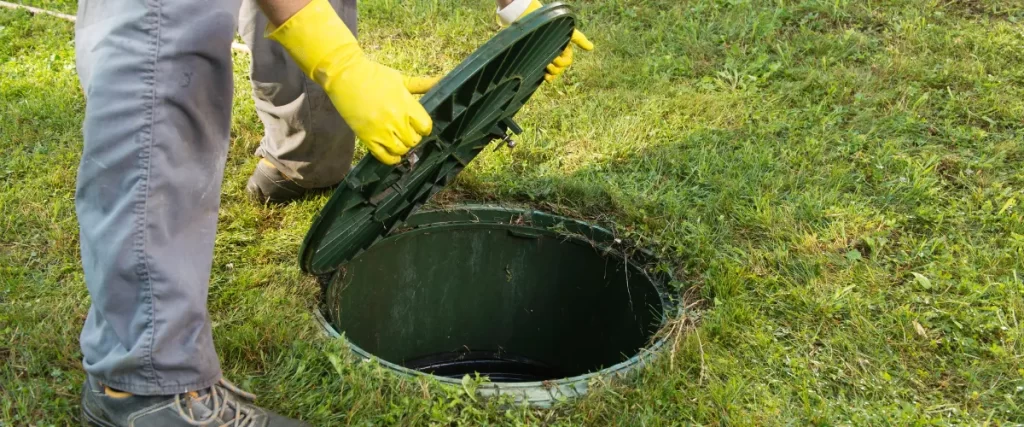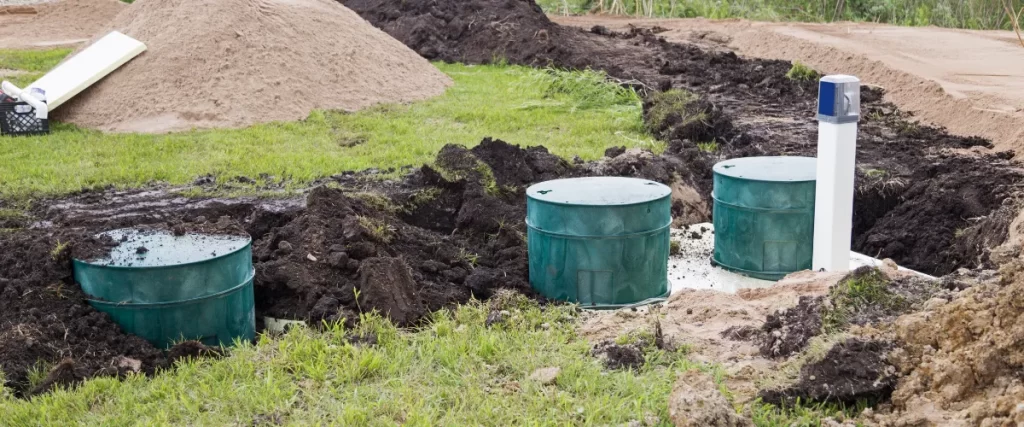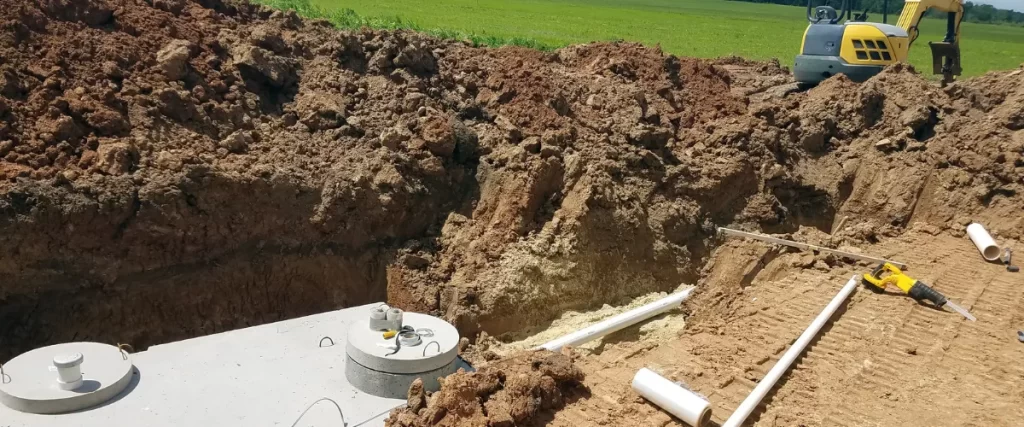Installing or upgrading a septic system is a major home improvement project that demands careful planning and strict adherence to local regulations. In Aurora, CO, septic tank permits and building codes are designed to protect public health, ensure environmental safety, and promote reliable system performance.
For homeowners in Aurora, understanding these requirements is critical to avoiding costly mistakes and ensuring your system functions efficiently for years to come. This comprehensive guide covers everything you need to know about septic tank permits and codes in Aurora, CO.

Why Permits and Codes Matter
Local building codes and permit requirements serve several important functions in septic system projects:
- Safety and Public Health: Permits ensure that all aspects of your septic system—tank size, drainage, and installation—meet established safety standards. This helps prevent system failures that could contaminate groundwater or pose health risks.
- Environmental Protection: Aurora’s regulations are designed to minimize environmental impact. By enforcing proper system design and installation practices, the codes help safeguard local soil and water resources.
- Quality Assurance: Compliance with building codes means that your septic system is built to last. Proper installation minimizes the need for expensive repairs and extends the life of your system.
- Legal and Financial Protection: Securing the necessary permits can prevent fines and legal issues. Moreover, having a permitted system can be an important selling point if you decide to sell your home in the future.
Understanding and following these codes not only protects your investment but also contributes to the overall well-being of your community and the local environment.
Overview of Aurora’s Septic System Regulations
Aurora, CO has specific guidelines and regulations regarding septic systems to ensure they are safe, efficient, and environmentally sound. Some of the main areas covered by these regulations include:
System Design and Tank Size:
The codes specify how a septic system should be designed based on the expected wastewater volume, which is determined by the number of household occupants and their water usage. The correct tank size is crucial for effective treatment and long-term performance.
Installation Standards:
Regulations cover the installation process of septic tanks, distribution boxes, and drain fields. These guidelines ensure that the system is constructed with the appropriate materials, reinforcement, and drainage systems to prevent failure.
Soil and Site Evaluations:
Local authorities require soil testing to determine the absorption capacity of your property. These tests guide decisions on system design and help prevent groundwater contamination.
Environmental and Health Requirements:
Septic systems must be designed and maintained to avoid adverse effects on nearby water sources, ensuring that contaminants do not reach groundwater or surface water.
Staying iormed about these key areas of the regulations is essential before beginning any septic system project in Aurora.

The Permit Process in Aurora, CO
Before installing or upgrading a septic system, you must obtain the necessary permits from your local building department. The permit process ensures that your project meets all applicable codes and standards. Below is an overview of the typical permit process in Aurora:
| Step | Description | Key Considerations |
| Research Local Requirements | Review Aurora’s building codes and septic system regulations via the city website or Building Department. | Verify specific requirements and updates in local laws. |
| Prepare Detailed Plans | Develop comprehensive plans including system design, tank size, drainage layout, and soil test results. | Include technical specifications and environmental data. |
| Submit Application | Complete and submit the permit application along with your detailed plans and required fees. | Check for online submission options to streamline the process. |
| Plan Review | Local building officials review your plans for compliance with codes, sometimes requesting revisions. | Be prepared to adjust plans based on feedback. |
| Inspections During Construction | Scheduled inspections are conducted at various stages to ensure adherence to approved plans and standards. | Ensure work is paused for inspections if necessary. |
| Final Approval & Certification | Once all inspections are passed and requirements met, a certificate of compliance is issued. | Retain certification for future property transactions. |
Key Septic Tank Codes and Regulations in Aurora
Aurora’s building codes for septic systems are designed to address various aspects of system design, installation, and maintenance. Understanding these codes can help you ensure your project is compliant and optimized for performance.
| Code/Requirement | Description | Why It Matters |
| System Design and Tank Size | Guidelines for calculating tank size based on household occupancy and water usage. | Ensures adequate capacity for effective wastewater treatment. |
| Reinforcement and Materials | Standards for using proper materials, including reinforcement (rebar or wire mesh) in tank construction. | Prevents premature failure and structural damage. |
| Drainage and Slope Requirements | Requirements for proper grading, slope, and drainage around the property to prevent water pooling. | Minimizes risk of groundwater contamination and system overload. |
| Soil Testing and Site Evaluation | Mandates soil tests to determine percolation rates and suitability for drain field installation. | Ensures the system is tailored to the specific conditions of your property. |
| Installation Standards | Specifications for installing tanks, distribution boxes, and drain fields, including curing and sealing. | Guarantees long-term reliability and efficiency of the system. |
System Design and Tank Size:
Codes require that the septic tank be sized appropriately to handle the expected volume of wastewater generated by your household. An undersized tank can lead to frequent backups and potential environmental hazards, while an oversized tank may be less efficient and more costly. Design calculations typically consider the number of occupants, water usage patterns, and any future expansion plans.
Reinforcement and Materials:
Building codes specify that septic tanks must be constructed with high-quality materials that can withstand the pressures of soil and groundwater. Reinforcement with rebar or wire mesh is often mandated to prevent cracking or collapse, ensuring that the system remains durable over time.
Drainage and Slope Requirements:
Proper site grading is essential to prevent water from pooling around the septic system. The codes dictate specific slopes and drainage solutions to ensure that water flows away from the system, thereby reducing the risk of system overload and contamination.
Soil Testing and Site Evaluation:
Prior to installation, a professional soil test is required to assess the percolation rate and absorption capacity of your property. This information is vital for determining the appropriate size of the drain field and ensuring that the septic system will function effectively in your specific location.
Installation Standards:
The installation process must adhere to rigorous standards, including proper curing times, sealing methods, and the use of approved materials. These standards help guarantee that the system is installed correctly and will operate safely and efficiently for its intended lifespan.

Working with Professionals
Navigating the permit process and ensuring compliance with all local building codes can be complex. Working with a licensed septic system professional or contractor who is familiar with Aurora’s regulations can make a significant difference. Professionals can:
- Perform accurate soil tests and site evaluations.
- Prepare detailed, compliant plans for your septic system.
- Manage the permit application process and coordinate inspections.
- Ensure that installation meets all local codes and industry best practices.
By partnering with an experienced professional, you not only streamline the process but also gain peace of mind knowing that your septic system will be safe, efficient, and compliant with all regulatory requirements.
Benefits of Compliance and Proper Permitting
Adhering to local septic tank codes and obtaining the necessary permits offers numerous benefits:
- Long-Term System Reliability:
A properly designed and installed septic system reduces the likelihood of failures, backups, and costly repairs. - Environmental Protection:
Compliant systems are less likely to contaminate local water sources, protecting the community and local ecosystems. - Property Value:
Homes with approved, compliant septic systems are more attractive to buyers and can command higher resale values. - Legal and Financial Security:
Proper permits provide legal protection, ensuring that your project meets local standards and that you’re insulated from potential fines or liabilities.
Common Questions About Septic Tank Permits and Codes
Q: Do I need a permit for my septic system installation or upgrade in Aurora, CO?
A: Yes, a permit is typically required to ensure that your septic system meets all local building codes and environmental regulations.
Q: How long does the permit process take?
A: The timeline varies based on the complexity of your project, but expect the process to take several weeks from application submission to final approval.
Q: What happens if my septic system doesn’t meet local codes?
A: Your project may be halted until corrections are made. Non-compliance can result in fines, costly modifications, and potential environmental hazards.
Q: Can I make changes to my septic system plans after I’ve submitted my permit application?
A: Changes are possible but must be resubmitted and reviewed by local officials. It’s best to finalize your design before applying.
Q: Is it necessary to hire a professional for septic system design and installation?
A: While homeowners can apply for permits themselves, working with a licensed professional ensures accuracy, compliance, and a smoother permit process.

Best Septic System Manufacturers
When choosing a septic system, working with reputable manufacturers ensures quality, durability, and reliable performance for your investment.
- Norwesco: Specializes in durable and lightweight polyethylene septic tanks suitable for residential and commercial applications.
- Bio-Microbics: Offers advanced wastewater treatment systems designed for efficiency and environmental compliance.
- Orenco Systems: Known for high-quality engineered products, including advanced treatment units and effluent sewers.
- Clearstream: Produces reliable aerobic treatment systems with a focus on energy efficiency and long-lasting performance.
- Presby Environmental: Provides innovative solutions like passive treatment systems that minimize maintenance and improve efficiency.
Why Choose Our Team
Our team has been delivering professional wastewater treatment solutions for years. By working with the best, you ensure top results and long-term savings. Contact us at (720) 507-4076 to get started!
